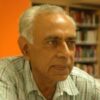German Technology at Its Peak
TRANSCEND MEMBERS, 26 Jun 2023
Dr. Ravi P. Bhatia – TRANSCEND Media Service
When the British government decided to grant India freedom in 1947, it resulted in violence, trauma in many regions of the undivided India. India was broken up into the major portion of India, and Pakistan — both in the western parts with Lahore and Karachi as the principal towns, and Dacca on the eastern part of the country. This division was made to accommodate the religious backgrounds of the people . However in the movements of people from one region to another to remain in the part that was conducive to peoples’ religious backgrounds, there was violence as many people lost their dignity and culture in such movements. Some people also lost their lives.
This has been documented by several books written on the pangs of partition as well as films made on the subject .
While moving from one region to another (Hindu to Moslem regions or vice versa), people lost their valuables — jewellery, clothes, cooking vessels, and sundry other belongings. One notable item that appeared lost in the mayhem of partition was a sewing machine . This machine was driven by movement of the hands of a person — not by the person’s feet.
This sewing machine was of PFAFF make that demonstrated the German technology at its best. German Technology was considered wonderful as it really was despite the Holocaust that Adolph Hitler perpetrated on the Jewish Populations during the WWII and where about six million Jews were murdered brutally.
While the division of the country was being carried out, the fate of the machine was of little importance, but once the conditions became peaceful after 1947 — more like in 1950s, the importance of several entities including that of the machine was recognised.
During the movement of people along with their valuables, this sewing machine was placed somewhere that could not be remembered by the owner of the machine. In any case the effort was to save valuables and the machine was not considered important in that category.
After several weeks of the partition, when the situation was peaceful, the owner of the machine thought about it and decided to retrieve it before moving from west Pakistan’s Lahore city to Amritsar and Moga cities, near the western border of Pakistan and India. After some running around and packaging useful items to be transported across the border, the PFAFF machine was also safely moved across the border.
Move forward to modern times — in 2020s and one begins to think of older items of domestic use. Here the PFAFF machine was taken out from its resting place to see if it worked properly. Surprisingly, the machine appeared in good shape despite the passage of about seventy years. It could be used for sewing some clothes that were to be hand switched at home. It was able to stitch properly despite the passage of so many years.
This again demonstrated the excellence of German Technology.
Hail PFAFF, Hail German Technology!
______________________________________________
 Dr Ravi P Bhatia is a member of the TRANSCEND Network for Peace Development Environment, an educationist, Gandhian scholar and peace researcher. Retired professor, Delhi University. His new book, A Garland of Ideas—Gandhian, Religious, Educational, Environmental was published recently in Delhi. ravipbhatia@gmail.com
Dr Ravi P Bhatia is a member of the TRANSCEND Network for Peace Development Environment, an educationist, Gandhian scholar and peace researcher. Retired professor, Delhi University. His new book, A Garland of Ideas—Gandhian, Religious, Educational, Environmental was published recently in Delhi. ravipbhatia@gmail.com
Tags: Germany, India, Technology
This article originally appeared on Transcend Media Service (TMS) on 26 Jun 2023.
Anticopyright: Editorials and articles originated on TMS may be freely reprinted, disseminated, translated and used as background material, provided an acknowledgement and link to the source, TMS: German Technology at Its Peak, is included. Thank you.
If you enjoyed this article, please donate to TMS to join the growing list of TMS Supporters.

This work is licensed under a CC BY-NC 4.0 License.